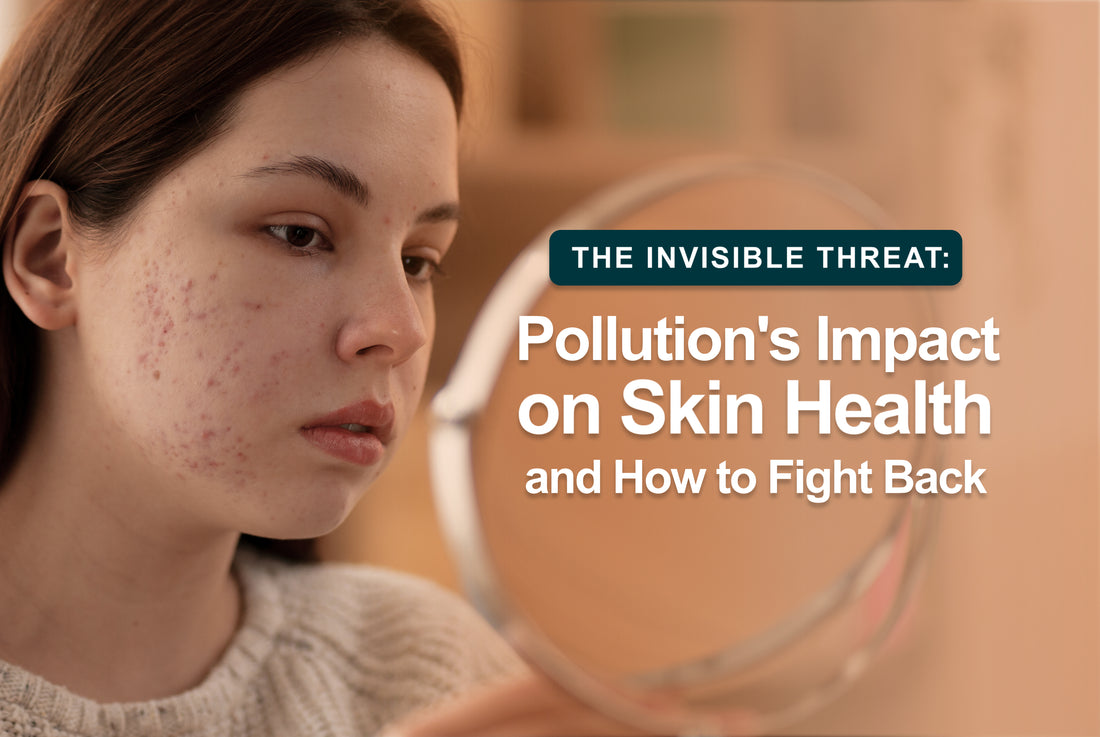Most of us are conscious of environmental pollution and its harmful effects on the planet. However, one often overlooked consequence of pollution is its detrimental impact on our skin health. The invisible threat of pollution particles can penetrate deep into our skin, leading to a range of skin issues.
In this article, we will explore the damaging effects of pollution on the skin and provide practical strategies to combat them. By understanding the impact and taking the right steps, we can help protect our skin and maintain a healthy complexion in today's polluted world.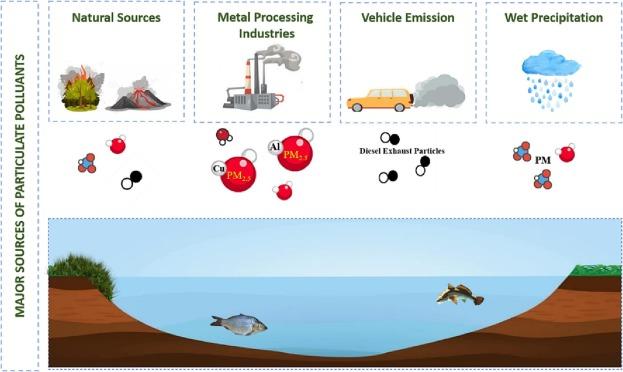
Understanding the impact of pollution on skin health
Pollution particles don't just hover around us; they intrude into our skin, causing significant damage. These tiny particles can penetrate through our skin's protective barrier, leading to inflammation, oxidative stress, and the breakdown of collagen and elastin.
To fully comprehend the impact of pollution on skin health, it's essential to delve into the mechanisms by which it affects our skin. Pollution consists of a complex mixture of tiny particles and gases, including particulate matter (PM), volatile organic compounds (VOCs), nitrogen oxides (NOx), and ozone (O3). These pollutants can originate from sources such as vehicle emissions, industrial activities, and the burning of fossil fuels.
Furthermore, pollution generates reactive oxygen species (ROS), which are highly reactive molecules that can cause oxidative stress in our skin cells. The production of ROS overwhelms our skin's antioxidant defenses, leading to an imbalance between the production and neutralization of free radicals. This oxidative stress can damage important cellular structures, such as DNA, proteins, and lipids, accelerating aging processes and contributing to skin conditions like acne, eczema, and rosacea.
Understanding how pollution infiltrates our skin is key to taking appropriate precautions to minimize its impact. The small size of pollution particles allows them to pass through the outermost layer of our skin, known as the stratum corneum. This layer acts as a protective barrier, but it can be breached by pollution, especially the fine particulate matter that is prevalent in urban environments. Once these particles enter our skin, they trigger a series of inflammatory responses, damaging the collagen and elastin fibers that give our skin its structure and elasticity.
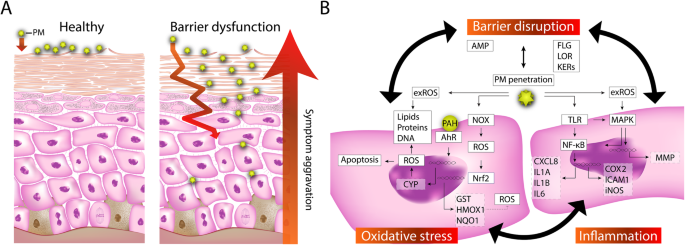
Identifying signs of pollution damage on the skin
The adverse effects of pollution on our skin are not always immediately apparent, but with careful observation, we can identify signs of pollution damage. It's crucial to be aware of these signs and look out for any changes in our skin health that may be attributed to pollution exposure.
| One common sign of pollution damage is a dull and lackluster complexion. When pollution particles penetrate the skin, they can disrupt the natural cell turnover process, leading to a buildup of dead skin cells on the surface. This can cause our skin to appear dull, rough, and lacking in radiance. If you notice that your skin has lost its healthy glow despite proper skincare routines, it may be a sign of pollution damage. | 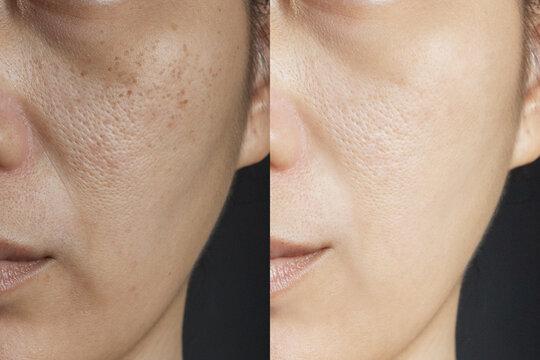 |
| Dryness and dehydration are also hallmark signs of pollution damage. Pollution particles can disrupt the skin's natural moisture barrier, leading to increased trans-epidermal water loss. As a result, our skin may become dry, tight, and prone to flakiness. If you find that your skin feels parched and lacks hydration, even after moisturizing, pollution exposure could be contributing to the issue | 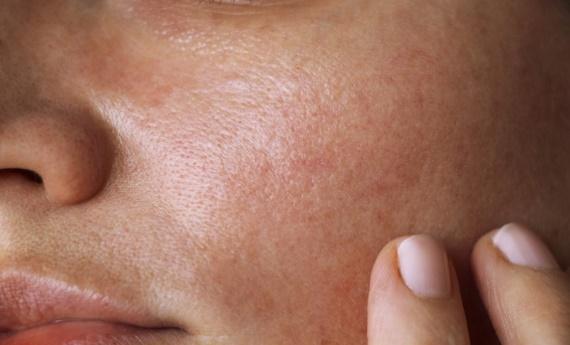 |
|
Dark spots, hyperpigmentation, and uneven skin tone are another set of indicators of pollution damage. The oxidative stress caused by pollution can trigger the overproduction of melanin, leading to the formation of dark spots or patches on the skin. This can result in an uneven complexion and make the skin appear older than it is. If you notice an increase in pigmentation irregularities, it may be a sign that pollution is affecting your skin. |
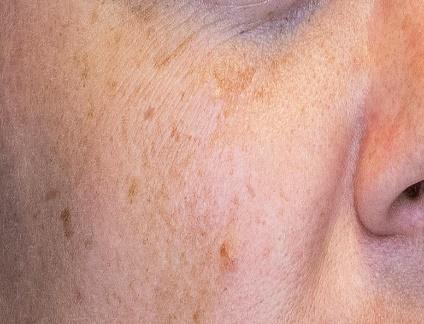 |
|
Inflammation and increased skin sensitivity are often associated with pollution damage. Pollution particles can trigger an inflammatory response in the skin, leading to redness, irritation, and heightened sensitivity. If you find that your skin is more reactive than usual, with increased sensitivity to skincare products or environmental triggers, pollution exposure could be a contributing factor. |
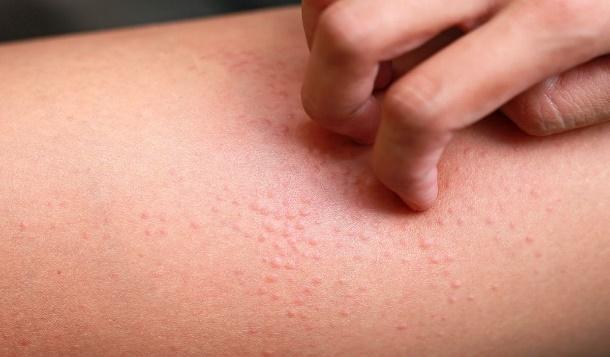 |
By recognizing these signs of pollution damage, we can take appropriate action to protect and repair our skin. Incorporating anti-pollution measures into our skincare routines and making lifestyle changes to reduce pollution exposure can help mitigate the detrimental effects on our skin health
Fighting back against pollution's impact on skin health
Now that we understand how pollution can wreak havoc on our skin, let's talk about ways to fight back and protect our skin from its damaging effects. While we can't completely avoid pollution, there are steps we can take to minimize its impact and keep our skin healthy and radiant.
1. Cleanse thoroughly:
Cleansing your skin properly is crucial to remove pollutants that have accumulated throughout the day. Opt for a gentle cleanser that can effectively remove dirt, grime, and excess oils without stripping away the skin's natural moisture. Double cleansing, using an oil-based cleanser followed by a water-based one, can be particularly effective in removing oil-based pollutants.
Aromatherapy Associates Oil to Foam Cleanser 140 ml / 4.73 fl oz
This formula transforms from silky oil to luxurious foam leaving skin clean and nourished. The cleanser contains Squalane which mimics the skin’s natural oils, hydrating and removing impurities. Brightening Niacinamide evens the skin tone and energizes the complexion while Rosehip Oil enriches the skin with moisturizing vitamins A and E.
Cellex-C BETAPLEX Gentle Foaming Cleanser 180 ml / 6 fl oz
Gentle Foaming Cleanser is a pearl-colored, lightly lathering cleansing gel. Contains alpha and beta hydroxy acids and has a refreshing scent of green cucumber. Specifically designed to remove oil, grime, and accumulated surface skin buildup. Provides the deep cleansing effect of a gently lathering, soap-type cleanser without stripping the skin’s natural oils.
2. Shield with antioxidants:
Antioxidants are our secret weapon against pollution-induced damage. They help neutralize free radicals and counteract the oxidative stress caused by pollution. Look for skincare products containing potent antioxidants like vitamins C and E, niacinamide, and green tea extract. Applying these antioxidants topically can provide added protection and boost the skin's natural defense mechanisms.
Bella Aura Antioxidant Booster 30 ml / 1 fl oz (BA10001)
This ultimate Anti-Pollution Booster is made with some of the world’s most potent ingredients, including Rosmarinic Acid, Azelaic Acid, Superoxide Dismutase, and Rutin, as well as 27 antioxidants, 18 vitamins, 17 amino acids, and 8 brighteners and minerals. This breakthrough emulsion protects, revives, restores, and rejuvenates the appearance of skin by targeting the root cause of skin imbalances.
3. Moisturize and hydrate:
Pollution can disrupt theskin's natural moisture barrier, leading to dryness and dehydration. That's why it's important to keep the skin hydrated and moisturized. Choose a moisturizer that suits your skin type and has ingredients like hyaluronic acid or ceramides, which help lock in moisture and strengthen the skin's barrier function.
Peau Vive Soothing Balm 50 ml / 1.7 fl oz (PV302R)
This unique Cyto-Protective Agent enhances the skin’s natural immune defenses against environmental impurities and sun damage. Selected plant extracts calm and protect sensitive, irritated skin and reduce visible redness.
Eltraderm Hyaluron E Cream 50 ml / 1.7 fl oz (ED502-R)
Infused with hydrating lipids and antioxidants that work synergistically to replicate the skin's Natural Moisturizing Factors. The Hyaluron E Cream delivers soothing comfort and superb moisture with a hydrating complex of Hyaluronic Acid, Vitamin E, Honey Extract, and Chamomile.
4. Sunscreen, always:
Sunscreen is not just for sunny beach days! Protecting your skin from harmful UV rays is essential in preventing pollution-related damage. UV radiation can worsen the effects of pollution and increase oxidative stress on the skin. Make sunscreen a daily habit by using a broad-spectrum sunscreen with an SPF of 30 or higher, even on cloudy days.
TiZO 2 Facial Mineral Sunscreen SPF 40 50 g / 1.5 oz (TZ5010)
A non-tinted facial mineral sunscreen that offers cosmetically elegant sun protection with a matte finish. Using the proprietary multiple particle size technology in an elegant base, TiZO has created an exceptional sunscreen.
5. Detoxifying masks:
Treat your skin to a detoxifying mask once or twice a week to help draw out impurities and pollutants. Look for masks containing ingredients like activated charcoal, clay, or kaolin, which can help unclog pores and remove surface-level pollutants. These masks can leave your skin feeling refreshed and rejuvenated.
LaVigne Naturals Le Masque Detoxify and Nourish Face Mask 60 ml / 2 fl oz (LV015)
This is a powerful all-in-one treatment for those who experience congested pores, dull-looking skin or need a clarifying treatment. Treating the skin with a facial mask treatment will help maintain equilibrium, draw out potential pore impurities, refine pore size, and help maintain a more balanced appearance.
6. Lifestyle changes:
While skincare products play a crucial role, making some lifestyle changes can also contribute to better skin health. Reduce exposure to pollution by avoiding peak traffic times or using alternative transportation methods like biking or walking. Quit smoking, as it not only damages your overall health but also exacerbates the effects of pollution on the skin. Lastly, eat a balanced diet rich in antioxidants and nutrients to further support your skin's health and resilience.
Now, pollution is an annoying reality we can't escape. But if we implement these strategies, we can minimize the impact and keep our skin looking healthy, radiant, and oh-so-protected. By taking proactive steps, we can maintain healthy and vibrant skin despite the environmental challenges we face.
Remember, taking care of your skin goes beyond beauty; it's about keeping it healthy and protected from the harmful effects of pollution. Embrace a skincare routine that will keep your skin glowing and beautiful for the long haul. Your skin deserves love and care. So go ahead, rock that vibrant complexion, and show pollution who's boss!
Sources:
Tsai, T.-H., Huang, Y.-L., & Hsu, Y.-J. (2018). Skin Microbiota: A Potential Indicator for Cutaneous Pollution. Journal of Environmental Science and Health. Part C, Environmental Carcinogenesis & Ecotoxicology Reviews, 36(2), 1–22.
Vierkötter, A., Schikowski, T., Ranft, U., Sugiri, D., Matsui, M., Krämer, U., & Krutmann, J. (2010). Airborne particle exposure and extrinsic skin aging. Journal of Investigative Dermatology, 130(12), 2719–2726.
Farage, M. (2009). Inflammation: mechanism of aging and age-related diseases. In Cutaneous Lupus Erythematosus (CLE) (Vol. 79, pp. 249–259).
Nouveau-Richard, S., Yang, Z., Mac-Mary, S., Li, L., Bastien, P., Tardy, I., … Humbert, P. (2015). Skin Quality Deterioration Precedes Photoaging and Chronological Aging: A Pilot Study. Journal of Dermatology, 42(5), 456–462.

